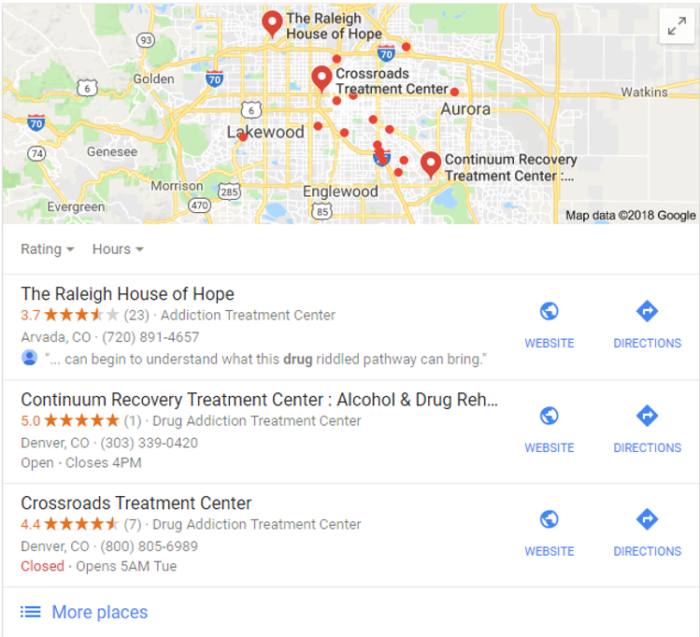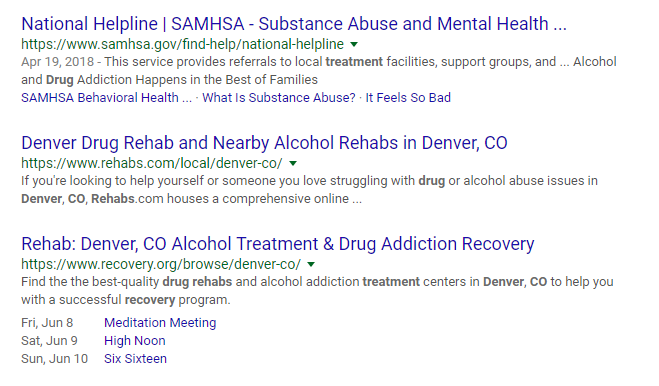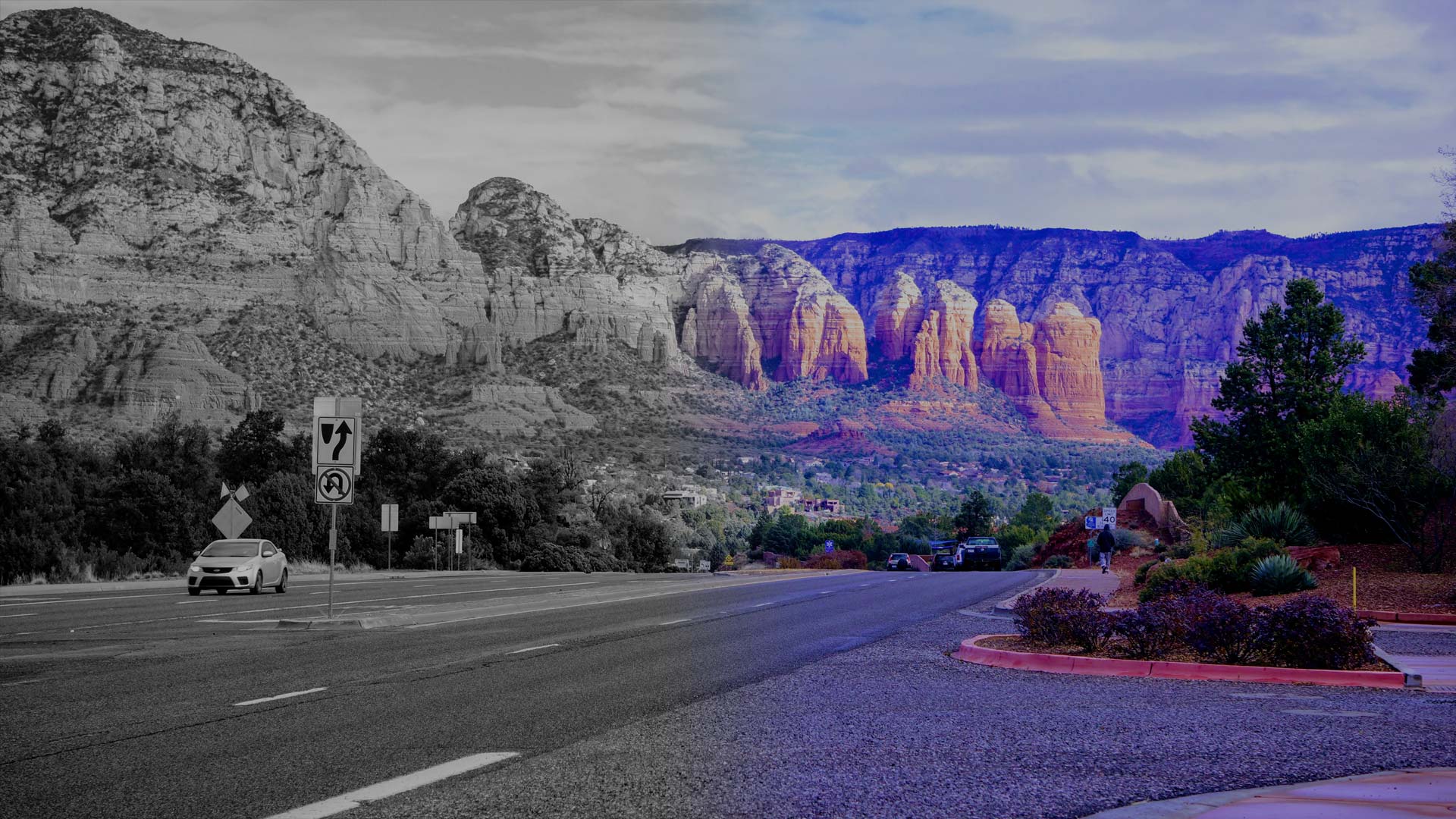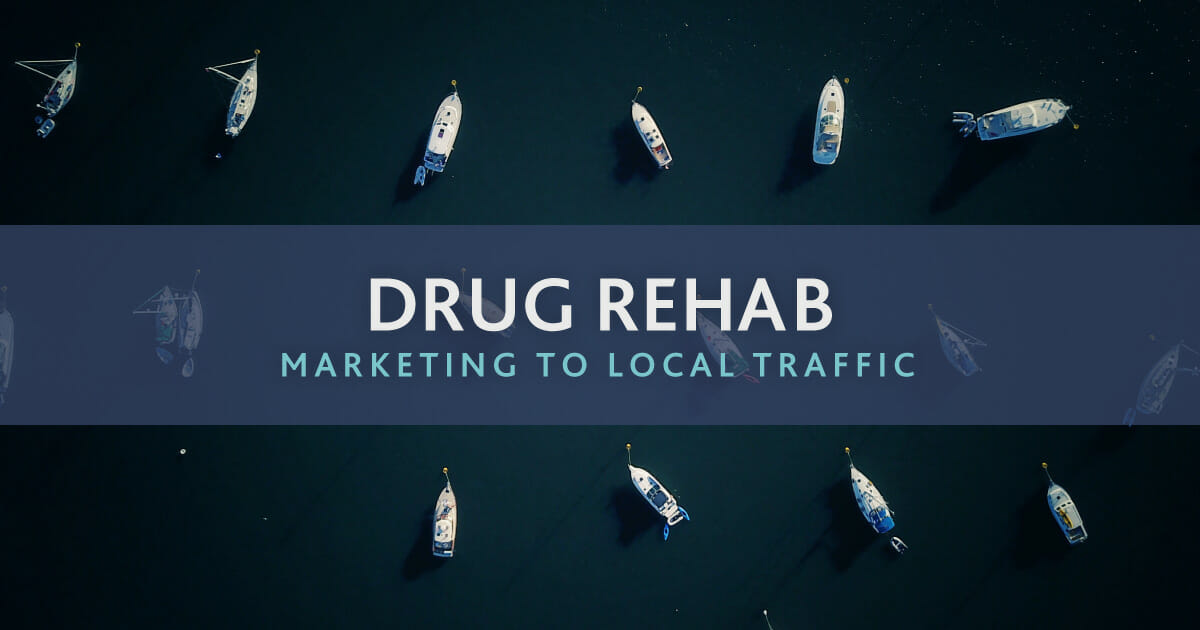Expert Advice on Local Drug Rehab Marketing: Getting Local Traffic
One of the biggest challenges that drug rehab programs find with their SEO and local marketing is, “how do I rank for cities and areas outside of where my rehab facility is located?” It often seems like a conundrum, but in addition to optimizing your site for local keywords, you also need to be relevant to the search intent from local traffic.
In short, the search engines need to see local traffic coming to your site and interacting in order to rank for local and geo-targeted search keywords and send more local traffic your way. Once again, we are faced with a frustrating question, “How do you generate local website traffic to get your website to rank, and in-turn gives you local traffic?”
Local Ranking Signals
Nowadays, we are seeing more localized search results from search engines like Bing, Google, Yandex and other engines. For drug rehabs, there are a lot of keywords with-which you would expect to see certain keywords returning local results. Keywords like:
- “Drug Rehab Near Me”
- “Addiction Treatment Center in California”
- “Alcohol Program for Women”
The search results for these keywords will usually show localized search results including a “snack pack” (the top 3 Google MyBusiness Locations) near the top of the search results, and a mix of organic search results below. The local “snack pack” is a preview of the Google MyBusiness map locations, and clicking these will open to a page showing ONLY map location results. These map location results are based off the proximity of the business address to the location of the searcher.

Local Snack Pack Search Results for “Drug Rehab Near Me” in Denver, CO
An Example would be, if you searched for “drug rehab near me” while you are in downtown Denver, the results populated will be the closest locations to where you are in downtown Denver. You would see a local “snack pack” for map locations of businesses that fit your search query and are nearest to your location where you searched from. These results are heavily based off the GPS coordinates and address of the businesses. So if you do not have an address for your business or a branch of your business in Google Maps, it is unlikely your business will be shown here.
Local Organic Search Results
Below the snack pack results, however, are the organic search results. These results take many more ranking signals into account than just proximity, like the map section does. The organic search results also offer much more opportunity for ranking, if your site is optimized well enough, and Google sees your content as relevant to a searcher in that area.

Localized Organic Search Results for “Drug Rehab Near Me” in Denver, CO
You can see in the example above, Google gave understands the intent of you searching the query: “Drug Rehab Near Me,” and your location when searching. Therefore it displays results that it believes are relevant to your location and for the intent that it perceives as: “You are looking for a local business that offers drug and alcohol addiction treatment.” It is important to note that these organic search results will be different for anyone searching in different locations (searching from California will give you personalized results for your California location, etc.).
Top Page Rankings for Drug Rehab Searches
It is also important to look at what ranks on the first page for local search results. The top result is for SAMHSA National Helpline – this result is at the top of the page for the majority of drug and alcohol-related search terms now, because Google feels that this hotline is the best and most relevant result to display at the top for people searching about drugs and alcohol.
We can get into whether or not we believe this is the best result or not, but as far as Google is concerned today, that is the most relevant result and it will not change in the near future. The SAMHSA hotline is then followed by 2 rehab directory landing pages for the Denver area. Once again, Google’s opinion is that having these pages that display multiple rehabs in the Denver area is the best search result for the intent of the user, and you have the chance to refine your search on the directories if you click through to them.
First Page Rankings for Drug Rehab Websites
Usually, below the snack pack and the top SAMHSA and directory results, you will be able to find 1-2 actual drug rehab program websites, rather than directories or topical results. So how did those rehabs get this great placement in the search results? How can you get your rehab to the top 1-3 pages of search results like these? Organic local search results take many factors into account, including the address and proximity of your business to the searcher – just like the snack pack results – and other ranking signals. In order to rank in these positions, you need to send the right signals.
This is where a comprehensive approach to SEO and online marketing comes in. If your entire SEO and marketing campaign is set to give these signals, the more likely that your website will be featured in these search results. Ranking signals can include optimization for the desired keywords (including local and geo-targeted keywords like California heroin rehab program, etc.), but also take into account the locations of referral traffic.
Let’s say your rehab is in Denver Colorado, but you want to appear in the search results for residents of San Francisco, California. You are not going to rank easily based of your geographic location alone, you need a boost to push your search visibility in the San Francisco area. Making your content relevant to San Franciscans, and then putting that content right in front of searchers in the San Francisco areas can start getting you some localized traffic.
As this traffic begins to interact with your website, Google and other search engines’ algorithm can “learn” that your business and website are a relevant to that area. This is a ranking signal, and it can be strengthened over time to make a stronger connection. The more your SEO and marketing campaign builds and strengthens localized connections like these, the wider a service area you can build for your brand.
How Long Does it Take to Rank Locally with SEO?
Organic SEO results do take time to establish and build with Google and other search engines. Some companies may offer you a quick solution to rank locally quickly, but you need to be wary of these claims. Anything that sounds too good to be true probably is, and black hat shortcuts can get your business into a lot of trouble with Google.
What you need to look at to get an idea of how long it will take, is the search results… who and what is ranking for local search terms? Getting good local rankings in a big market like San Francisco is going to take more time than getting rankings is a small market like Scott City, Kansas.
Also, think of how far the link is between your business and the locale you want to target. If your rehab is in Fargo, North Dakota, and you are targeting traffic in Portland, Maine, it is going to take a while to build a relevant connection to that part of the country.
The Importance of Doing Local Rehab Marketing The Right Way
The “right way” is also the ethical way… this means no schemes or shortcuts to trick Google into ranking you for a local market that you are not yet established in. Instead, you need to build meaningful and worthwhile relevance to the local market you are targeting, offering resources, information and help that is relevant to the users in that area.
The good thing about engaging in a local marketing campaign the right way – as opposed to relying too heavily on PPC campaigns or tricks – is that the connections you build have long-term value. Once you start ranking for terms in the locality that you are targeting, it is much more likely that you will HOLD those rankings in the long term. SEO is all about building equity in your website and your online presence and is a long-term investment that will continue to pay off for months or even years. You might have noticed that certain businesses tend to hold their local rankings for a long time, and you might ask yourself, “What are they doing to always rank high for these local search terms?” The answer is that they started off correctly, and have the equity and relevance to hold their rankings.
If you have a local marketing challenge that you would like the Addiction Rep Team to look over for you, contact us today and we can devise a plan to build your equity and relevance for local search terms, and increase your website’s visibility to your target audience.
Learn more about local search marketing and SEO for drug rehabs and addiction treatment programs in the previous entry to the series.




